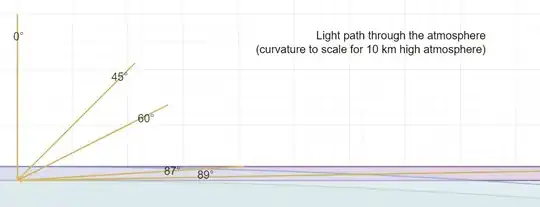Scenario: While poking around in an alien ruin, scientists discover a gateway which offers instant transportation to an Earth-like world.
The Observed World: The gateway leads to an area that is temperate (let's say it's similar to east coast of America, like Virginia/Maryland/Pennsylvania, for simplicity). The air is breathable, and there is an ocean visible within less than a mile. The gravity and day/night cycle almost exactly matches Earth. The planet has no visible satellites, natural or otherwise. There is flora and fauna, but no intelligent life.
The Actual World: The "planet" is actually an artificial construct—a flat (coin-shaped) world created through technological (rather than supernatural) means. The size is similar to what Earth would be, were its surface peeled open like an orange, and flattened into a disk. Gravity is artificially generated and regulated to mimic Earth (so you won't be pulled at an angle as you approach the edge). The atmosphere is held in by an invisible field which forms a dome over the livable side of the world.
The world orbits a yellow star similar to the Sun, and also rotates (like a spinning coin), so the sun will appear to rise and set.
Question: If a team of scientists are sent through the gateway with the purpose collecting flora/fauna/air/water samples, and observing the night sky (to determine the planet's location relative to Earth), what would tip them off that they're not on a typical spherical planet?
Particularly, what would stand out to someone with a good grasp of general physics, or astrophysics, even if they had no reason to suspect that the planet was anything other than a typical sphere?
I'm not looking for a mathematical proof, but rather something that visibly stands out and would make a scientist decide to perform such a proof in the first place.
Their available technology is modern-day: telescopes, laptops, quadcopter-mounted cameras, etc.


